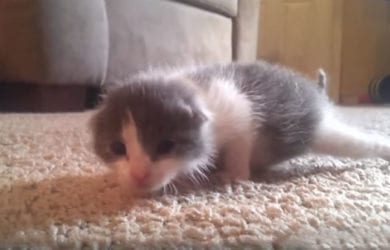Understanding your cat’s needs is the key to keeping them happy. Unfortunately, as you well know, cats don’t communicate in the same way as other animals or humans for that matter! From meowing to hissing, growling, and of course, purring, the various noises your cat makes depends on their needs and mood. But, why do cats purr?
Many assume that cats purr because they’re happy but this isn’t always the case. Let’s take a closer look.
How Do Cats Purr?
Before we get to the why, how do cats purr? Where does this gentle vibration come from? There have been dozens of theories surrounding purring cats, however, it is now believed that this sound comes from the intrinsic laryngeal muscles. These muscles open and close the space between the vocal cords, leading them to separate, thus causing this purring sound.
Why Do Cats Purr? Here Are 4 Reasons!
Now you know how cats make this incredible sound, let’s have a look at why do cats purr. Here are 4 reasons
1- They’re Happy
That’s right, your cat could just be telling you that they’re really happy to see you. Have you noticed them purring at your front door when you get back from work? Maybe your cat purrs when you’re sat on the sofa having a cuddle. In these instances, your cat is just showing you that they are content.
2- They Want Something (Hint: It’s Probably Food!)
If it’s mealtime and they’re lingering close to their bowl, your purring cat is likely letting you know that they’re hungry. Typically, cats combine this purr with a meow to ensure they get your attention. They may also rub up against your legs.
3- The Mother-Kitten Connection
As with any mother-child connection, the bond between kittens and their mum is a strong one. Young kittens purr loudly around their mother. Researchers believe this could be a way for them to call their mother when it’s feeding time.
4- They’re Healing Themselves
A purring cat could also be a sign that they are in pain or injured. You may be wondering why a cat would use their energy purring if they’re not well. The truth is, studies suggest that purring actually helps them heal quicker. These small vibrations can:
- Heal wounds
- Repair muscles and tendons
- Lower swelling
- Reduce pain
While there is no proof suggesting this, a cat purr could be one of the reasons felines can jump from high places and typically recover quicker from surgery than dogs do.
Don’t Just Assume Your Furry Friend Is Happy
As you can see, you should never assume that your cat is happy just because they’re purring. In some cases, they could be sick or injured and in pain. Always keep an eye on your cat’s behaviour and take them to the vet if you notice a change in their eating, sleeping, and emotional patterns.
If you’re looking for the right place to find a pedigree cat for your home, check out our Cat People platform! We provide a secure space for you to find the purrfect pet!

